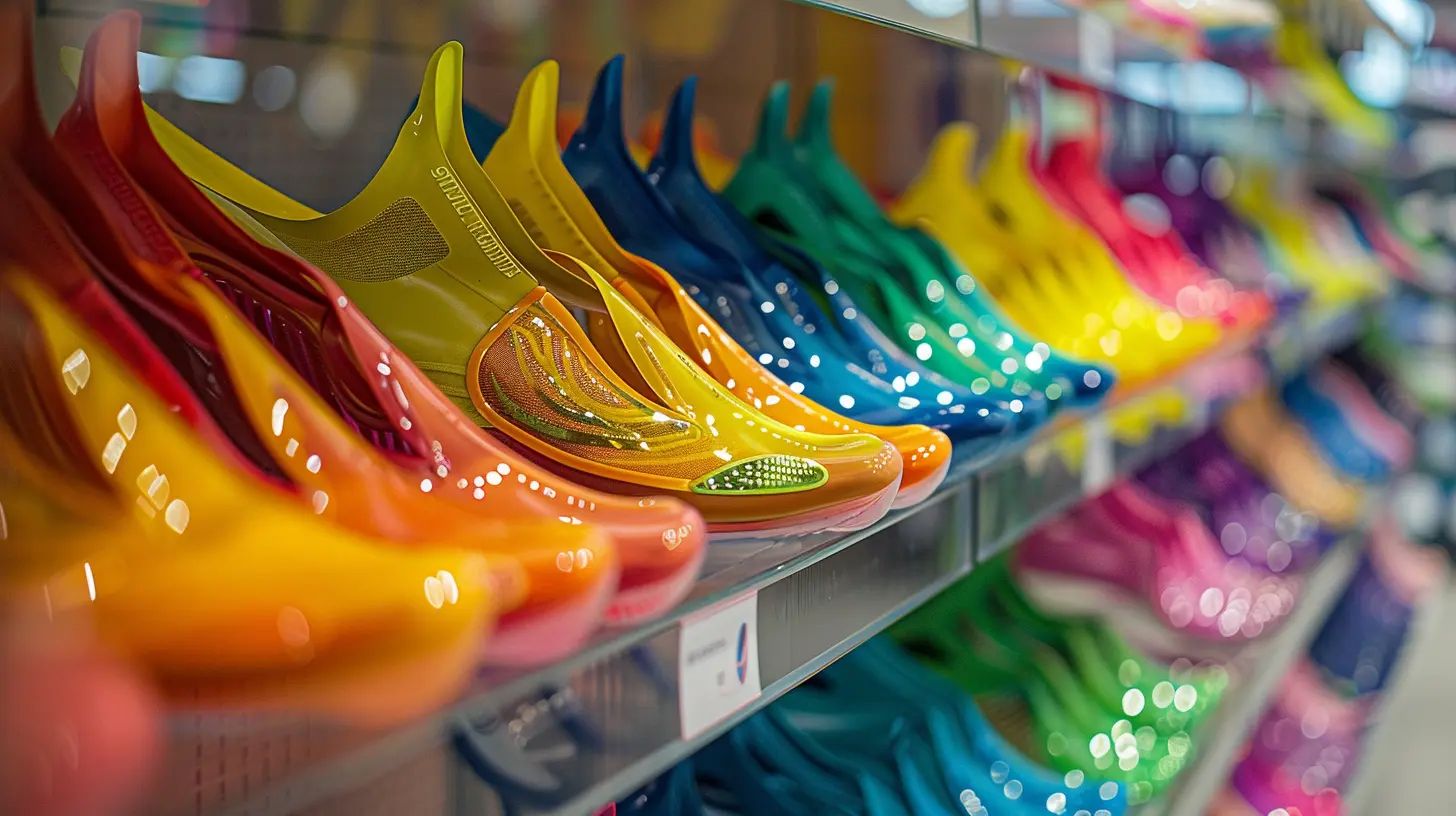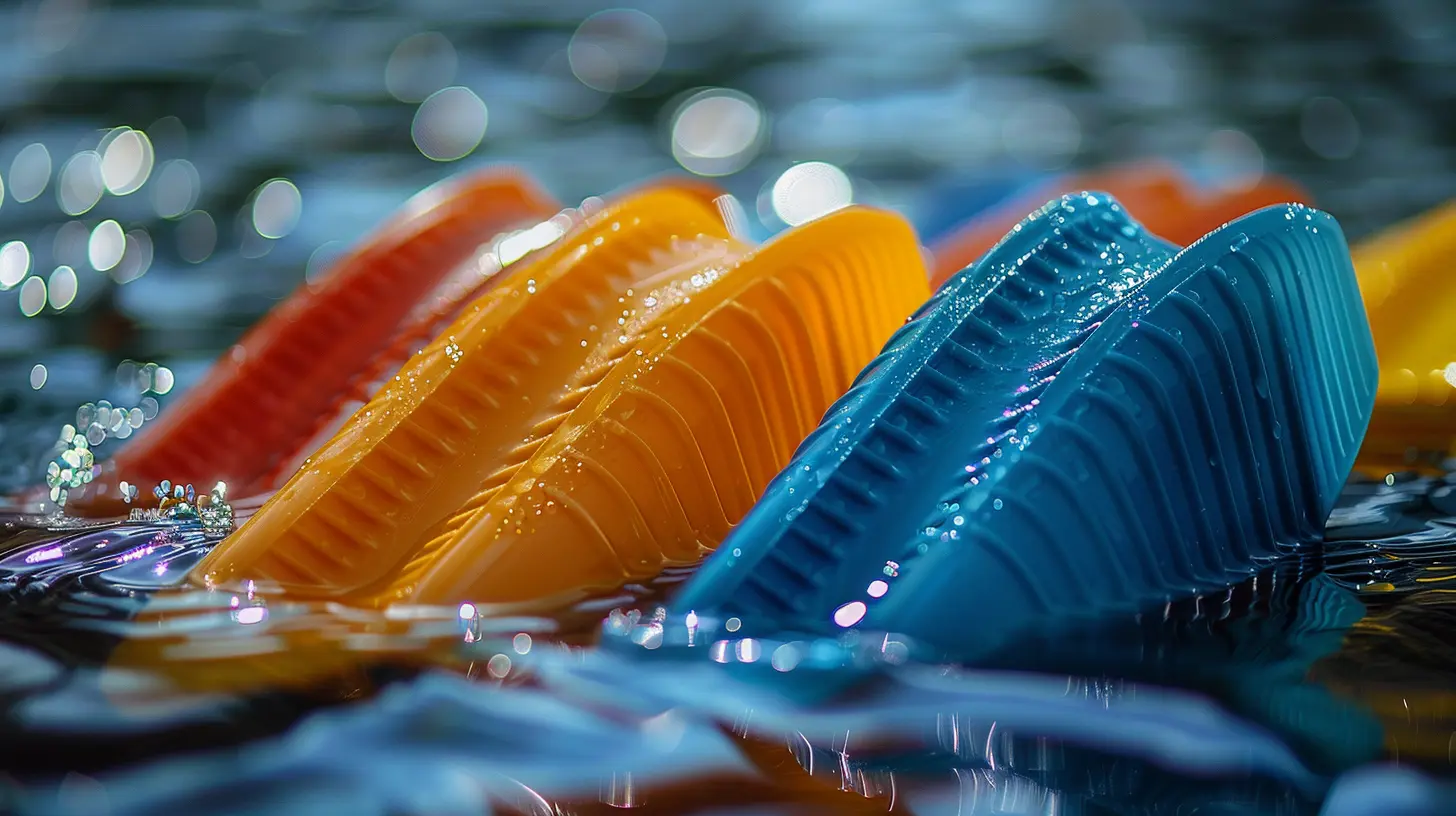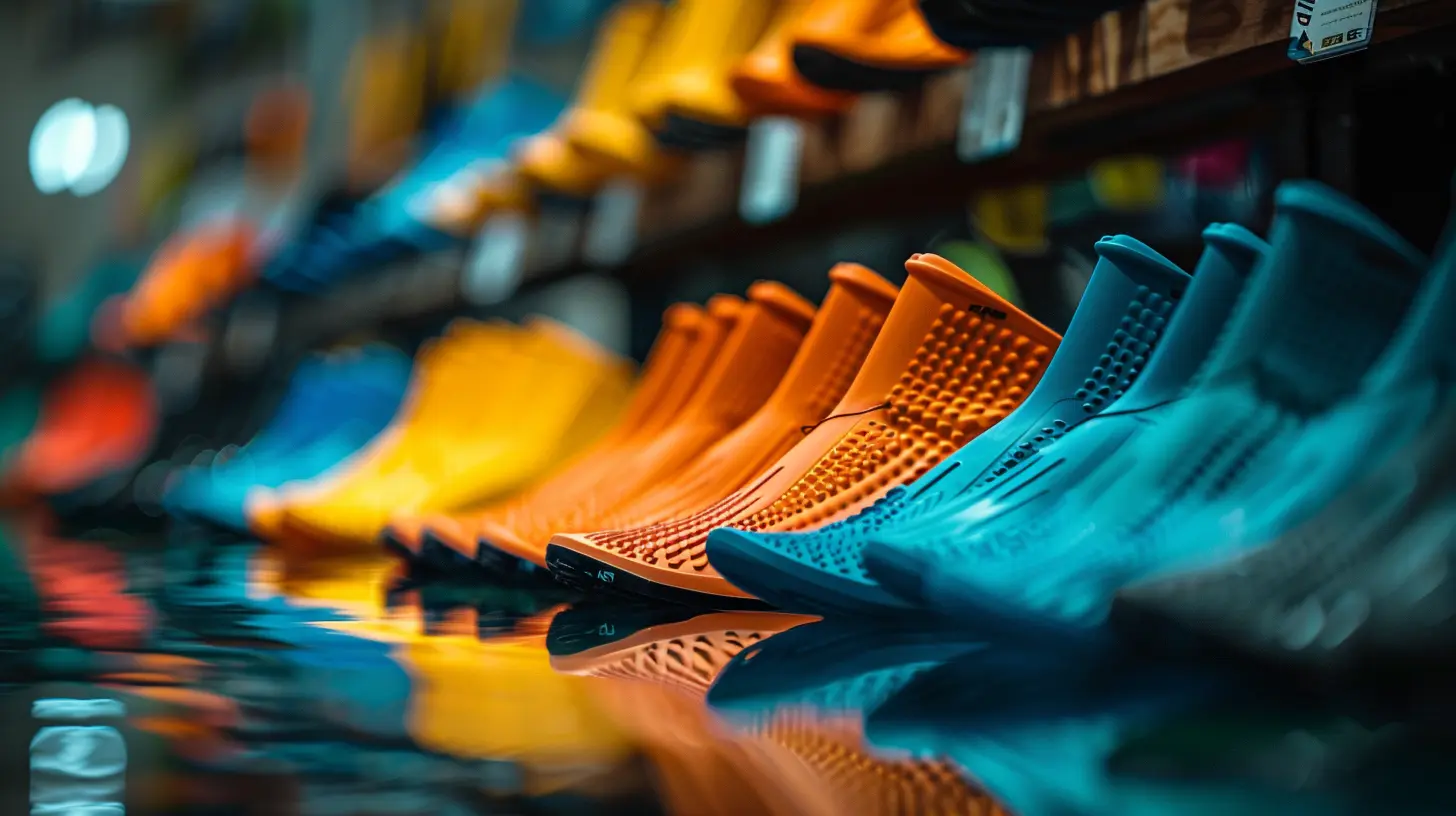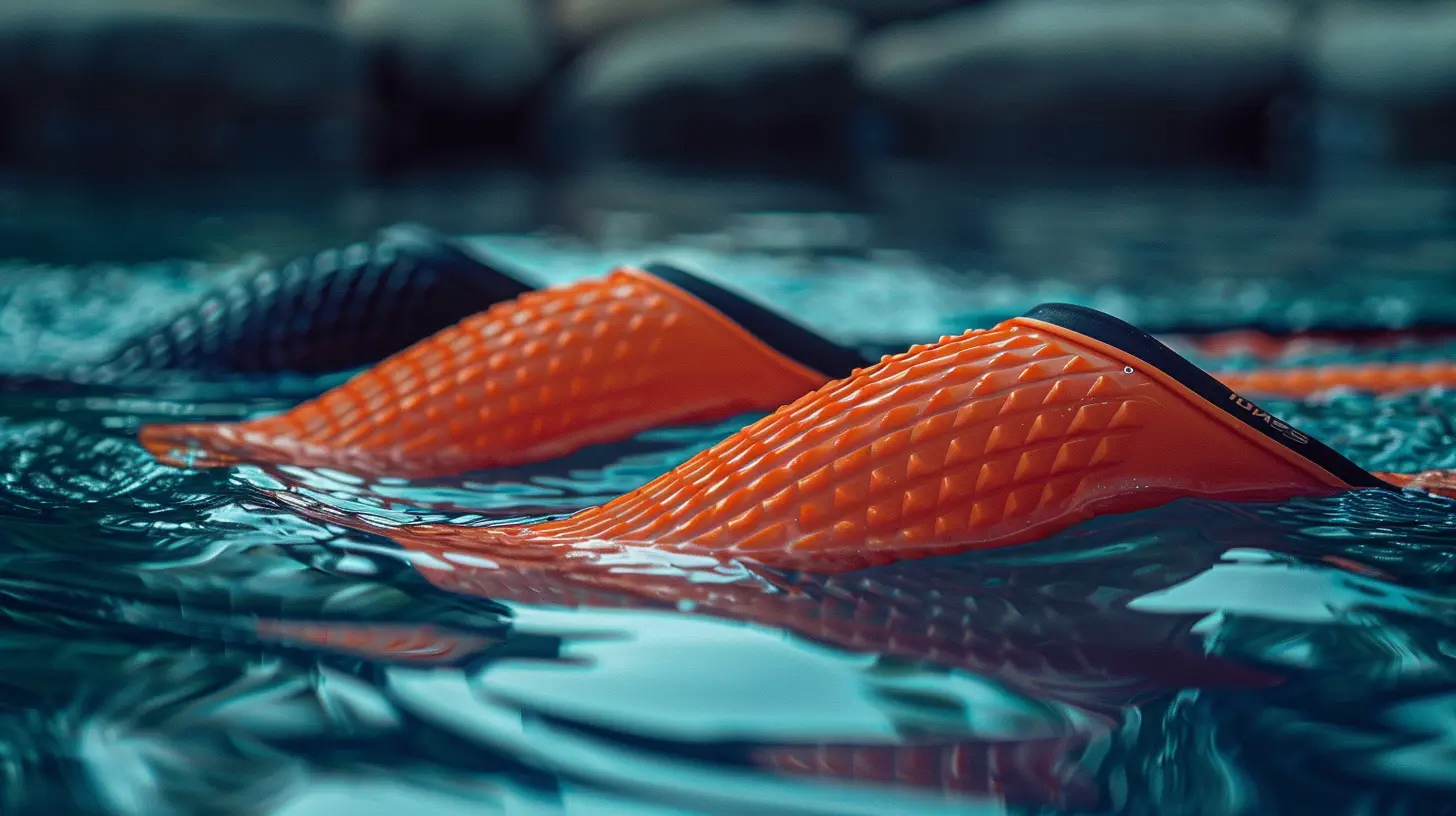Choosing the Best Swimming Fins for Training
21 August 2025
So, you're ready to take your swim training to the next level? Maybe you're training for your first triathlon, or perhaps you're just tired of lagging behind in your local swim club. Whatever your reason, swimming fins can completely change the game for your workouts. But here's the thing—grabbing just any pair off the rack won't cut it.
There’s a sea of options out there (pun absolutely intended), and choosing the best swimming fins for training can feel like trying to navigate through murky water. That’s where I come in. I’m here to break it all down — in plain English — so you can make the right pick without wasting time or money.
Let’s dive in. 🏊♂️
Why Use Swimming Fins for Training?
First things first — why should you even bother with fins during your swim training? Are they just flashy accessories? Nope. They’re way more than that.Think of swimming fins like power tools. You could use a manual screwdriver, sure, but a power drill gets the job done faster and more efficiently. Same with fins. They help fine-tune your technique, build strength, improve flexibility, and increase your speed. They're also amazing for isolating leg movement and reducing overall drag.
Here’s what fins help you with:
- Improved Kick Mechanics: Train your legs to kick from the hips, not just flutter around.
- Increased Leg Strength: Fins add resistance so your muscles work harder.
- Better Positioning: Helps with body line and staying horizontal in the water.
- Cardio Boost: You’ll work harder and get a serious aerobic workout.
- Feedback and Feel: Get a better sense of movement and water displacement.
Bottom line? Fins are a must-have in your training toolkit.
The Different Types of Swim Fins
Before you grab the first neon-colored pair you see, it's important to know that not all fins are created equal. In fact, there are several types designed for different types of training. Picking the wrong one is like bringing a surfboard to a backstroke session — it just won’t work.1. Short-Blade Fins
These are the go-to fins for serious swimmers and coaches. Why? Because they closely mimic your normal kicking pace.Pros:
- Promotes proper technique
- Increases kick speed
- Better control
Best For: Competitive swimmers, improving flutter kick, refining stroke mechanics.
2. Long-Blade Fins
Longer blades = more surface area = more propulsion. These are great if you want to feel like Aquaman flying through the water, but they’re not ideal for technique work.Pros:
- Adds power to kicks
- Builds leg strength
- Easier to float
Best For: Beginners, casual swimmers, strength training.
3. Mono-Fins
These look like something straight out of a mermaid movie. One large fin that both feet slide into — perfect for underwater dolphin kicks.Pros:
- Builds core strength
- Great for improving undulation technique
- Used in elite training
Best For: Advanced swimmers, competitive butterfly swimmers, freestyle undulation.
4. Heel Strap vs. Full Foot Pocket
You’ll also notice some fins come with an open heel and adjustable strap, while others are closed like a shoe.- Open-Heel Fins: More flexibility, easier to get on and off.
- Full Foot Pocket: Snug fit, better for streamlined kicking.
Generally, full-foot styles are better for pool training. Open heels are more for snorkeling or ocean swimming.
Key Features to Look For in Training Fins
Now that you know the types, let’s talk features. You don’t want to go all in on a pair that falls apart after two practices or gives your feet blisters the size of golf balls.✅ Comfort and Fit
This is non-negotiable. A good pair of swim fins should be snug without squeezing the life out of your toes. Too tight, and you’ll deal with cramping. Too loose, and they’ll slip right off mid-lap.Pro Tip: Always try them on when your feet are slightly wet — that’s how they’ll feel in the pool.
✅ Material
Silicone vs. Rubber. Silicone is softer, more blister-resistant, and generally more comfortable. Rubber is stiffer and offers more resistance.Go for: Silicone if you're training often. Rubber if you want to build strength fast.
✅ Blade Flexibility
Stiff blades work your legs hard, but they can mess with your technique. Softer blades won’t challenge your legs as much, but they’re great for perfecting form.Ask yourself: Do I want strength, speed, or technique? Then pick accordingly.
✅ Buoyancy
Some fins float. Others don’t. Floating fins help you maintain a better body position, especially if you tend to sink. Non-buoyant fins are harder on your legs and core.Choose floating fins if you need help staying streamlined.
Best Swimming Fins for Training (Top Picks in 2024)
Let’s get into the juicy part — the creams of the crop, the fins that coaches and athletes rave about.1. FINIS Zoomers Gold
These bad boys are a staple in swim bags everywhere.Why they're awesome:
- Short blade for high tempo kicks
- Great for building technique and strength together
- Comfortable rubber foot pocket
Perfect for: Intermediate to advanced swimmers focusing on technique.
2. Speedo Biofuse Training Fins
Speedo nailed it here. These fins are all about that natural feel in the water.Why they're awesome:
- Short blades create realistic resistance
- Soft silicone = very comfy
- Great for daily training
Perfect for: Swimmers looking for an all-rounder fin.
3. Arena Powerfin Pro
If you're serious about improving your kick, these are top-tier.Why they're awesome:
- Angled design for better propulsion
- Rigid blade pushes leg strength to the max
- Open heel for ankle flexibility
Perfect for: Competitive swimmers and kick sets.
4. TYR Stryker Silicone Fins
Lightweight, fast, and built to last.Why they're awesome:
- V-shaped blade for added speed
- Silicone construction = blister-free
- Great for travel and dry quickly
Perfect for: Swimmers who train often and want consistent performance.
How to Choose the Right Fins For YOU
Alright, you’ve got options and now it’s time to pick what works for you.Ask yourself these five legit questions:
1. What’s my current swim level?
- Newbie? Go for long fins.
- Advanced? Short fins will suit you better.
2. What am I trying to improve?
- Speed? Technique? Leg endurance? Match your goal to the fin type.
3. How often do I train?
- Daily swimmers need comfort and durability — think silicone.
4. Is it for pool or open water?
- Pool = full foot pocket
- Open water = open-heel straps
5. What’s my budget?
- Good fins don’t have to cost a fortune, but a cheap pair won’t last long either.
Tips for Training with Fins (Like a Pro)
You’ve picked your perfect pair, now let’s get the most out of them.- Start Slow: Don’t wear your fins for the entire workout at first. Your legs need time to adapt.
- Mix It Up: Use them for kick drills, sprints, or technique-focused sets.
- Stretch After: Your calf muscles and ankles get a serious workout — show them some love post-swim.
- Avoid Overuse: Too much fin time can lead to bad habits. Think of them as a tool, not a crutch.
Common Mistakes to Avoid
Let’s nip these in the bud so you don’t waste time or money.- ❌ Buying the wrong size — always try before you buy if possible.
- ❌ Using snorkeling fins for pool training — they’re not built for it.
- ❌ Ignoring ankle pain — that’s a sign something’s wrong.
- ❌ Wearing fins the whole session — defeats the purpose of training technique.
Final Thoughts
Choosing the best swimming fins for training doesn’t have to be complicated — but it does require a little bit of thought. Think of it like picking running shoes. You wouldn’t wear hiking boots to a sprint, right?The right fins will massively improve your swim workouts. They’ll strengthen your kick, streamline your body, and help you feel the water in a whole new way. So take a few minutes, figure out your training goals, and grab the fins that’ll help you crush them.
Remember, in the world of swimming, even small gear changes can make a big splash.
all images in this post were generated using AI tools
Category:
SwimmingAuthor:

Everett Davis
Discussion
rate this article
1 comments
Mila Carr
Selecting the right swimming fins enhances technique and builds strength; invest wisely for optimal training benefits and improved performance.
September 6, 2025 at 2:43 AM

Everett Davis
Thank you for your insight! Choosing the right fins definitely plays a crucial role in improving swimming technique and building strength.


